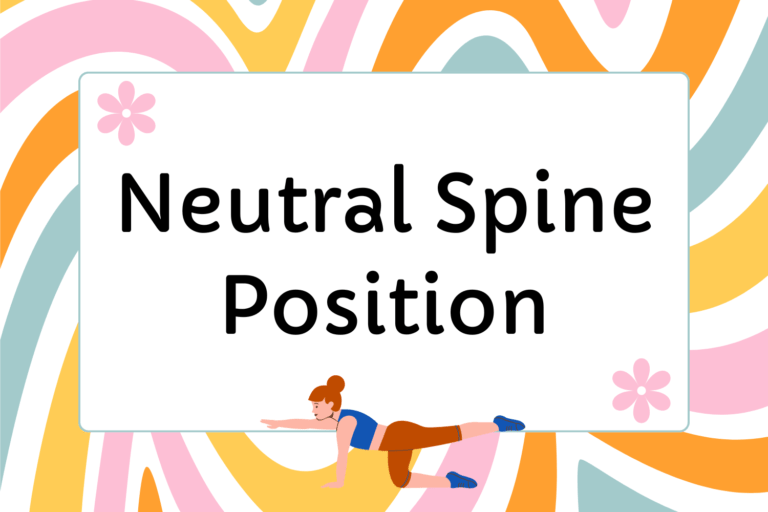No matter how long you’ve been taking Pilates or how fit you are, injuries are always a risk. However, by taking a few simple steps to prevent injuries during class, treat them as they happen, and make sure you rehabilitate them properly, you’ll be able to cut down on the time you spend sitting on the sidelines. After all, an ounce of prevention is worth a pound of cure!
Prevention
While there is no surefire way to ensure that you’ll never get injured, there are a few little things that can take the risk from high to minimal. Keep these tips in mind the next time you head into class:
- Scoop the abdominals to protect the spine: One of the first things—if not the first—you learn in Pilates is how to properly scoop and engage the abdominal muscles in order to provide a stable center and protect your spine. Never forget this principle, whether you’re doing 100s or more advanced exercises, like open leg rockers. It’s absolutely vital to protect the spine and lumbar region of your back, which can be injured easily during exercises that require a reclined position.
- Always be warm: Most instructors and studios have a policy of not allowing students to jump straight into class without warming up, but since the enforcement varies, make sure you keep to it yourself. If you’re late to class, don’t feel obligated to catch up to everyone else. Instead, sit toward the back and warm yourself up. Warm muscles reduce injury risk, so never rush into something you may not be warm enough for—your muscles need all the circulation they can get!
- Stop when you’re in doubt or unsafe: Your instructor should be guiding you through every exercise, explaining how to stay safe when performing it. If you ever have questions on the proper way to do things, experience pain in any area, or need a hand figuring out your alignment, stop what you’re doing and call the instructor over. By waiting until you’re absolutely clear on the correct technique, you avoid the risk of injury that comes with bad habits and improper alignment.
- Tell your instructor about pre-existing conditions and injuries: If you have an old injury that sometimes acts up or a medical condition that may at any time present a health risk to you, make sure to tell your instructor about it from day one. Even if it doesn’t seem that important, there may be exercises in Pilates that aggravate your condition(s), posing a risk for injury. If your instructor knows the full story, he/she can modify any exercises that may put you at greater risk for injury.
- Stay hydrated and breathe: If you stop breathing and drinking water, your muscles become tighter, due to deprivation of the two key ingredients they need to function (water and oxygen). Always stay hydrated throughout class and throughout your day, cutting down on diuretics such as caffeine and high sugar foods. When in class, especially during difficult poses, breathe! The more stress your muscles are under, the more oxygen they need, so always remember to breathe. Holding your breath—especially with dehydrated muscles—causes tightness and, in the long term, brittle muscles and bones, making your body more injury prone.
- Sit out when you need it: Pilates is a great workout, and should have you working hard. But if you feel like things are getting to be too much for your body to handle, slowly pull out of the exercise and take a minute for yourself. If you start pushing yourself without having the energy and physical means to do so, you’ll compromise your technique, which poses a huge risk of injury.
Hot Tip: Avoid Diuretics
If you’re a woman, try staying away from anti-bloating and menstruation relief pills. They contain a diuretic that flushes your body of water. While this relieves bloating, the combination of menstruation relief pills’ caffeine and diuretic can severely dehydrate you.
Injury Treatment
Don’t panic if you suffer an injury; by treating the injury properly, you can make a speedy and safe recovery, and be back before you know it. Here are some tips to make sure you give an injury the treatment it needs:
- See a doctor: When in doubt, see a doctor. Even if you don’t feel like an injury is that serious, it never hurts to have it checked out by your physician. Even injuries that don’t feel so bad can turn out to be tears in your muscle tissue or small stress fractures, both of which can be treated easily, but only with the proper diagnosis and treatment plan .
- HI-RICE: Recommended by doctors, the HI-RICE course of treatment is an excellent way to make sure common injuries such as sprains and pulled muscles get what they need. HI-RICE is an acronym for the treatment, which goes as follows:
- Hydrate: Drink lots of water and cut the caffeine. Injured muscles need all the help they can get, and that includes hydrating them properly.
- Ibuprofen: This is a step highly recommended by doctors, but if you feel like it’s not for you, don’t feel obligated. Ibuprofen (also known as Motrin) is a NSAID (Non-Steroidal Anti-Inflammatory Drug) that combines to relieve pain and take down any swelling. If you have tendons or muscles that are swollen, ibuprofen can not only relieve your discomfort, but also treat the inflammation that’s giving you pain in the first place.
- Rest: This is perhaps the most important step in HI-RICE. If you’re injured, you need to rest! Make sure to take the stress off the injured area immediately, whether that means going on bed rest or wrapping it up in an ACE bandage. Don’t use the injured area unless you absolutely must.
- Ice: For the first 24-48 hours after an injury, place an ice pack on the area for twenty minutes every hour. If the ice is irritating your skin, wrap it in a towel. Icing the area reduces swelling and inflammation, and also temporarily numbs the area, which relieves pain and discomfort.
- Compress: Apply pressure to the injured area to help reduce swelling; this technique is first used when you ice, as applying slight pressure with the ice pack compresses the area. After the first 48 hours, use athletic tape or an ACE bandage to keep light pressure applied to the area all day. The compression slows blood flow to the area, thus reducing swelling and inflammation.
- Elevate: Try to keep the injured area above the level of the heart, especially within the first 24-48 hours of the injury. By elevating when you can, the blood flow is directed away from the injured area, functioning to reduce swelling and inflammation.
Fun Fact:
In studies of athletes, HI-RICE has been found to reduce the time lost to injuries by over 40%, and even reduce significantly the amount of scar tissue that forms following an injury!
Rehabilitation
Following an injury, it is vital to rehab it properly before returning to normal activities. By going about it the right way, you not only ensure you’re ready to get back to normal activities, but you can even make the area stronger and less prone to injury than before.
- Start slow: Never jump full throttle back into classes after an injury. Start slow, and discuss the injury with your instructor before starting classes again. Start off by participating in the first ten minutes of class or so, then adding another ten minutes once a month till you’re back to full strength.
Stay the Course
It’s never fun being injured, but if you remember the steps to take in prevention, treatment, and rehabilitation, you’ll be able to bounce back from even the most difficult injuries, and prevent yourself from sustaining more!





